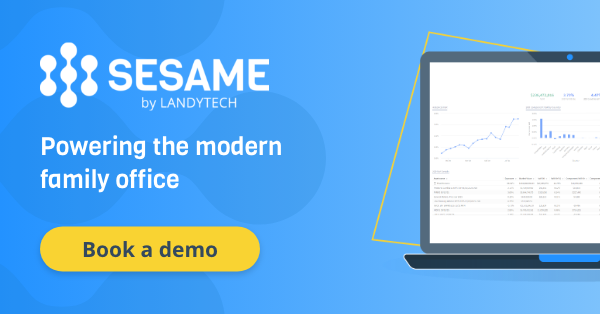Written by Landytech
4 Apr 2023
Reporting on portfolios spanning multiple asset classes, currencies and geographies is a time intensive, manual process, often prone to errors. This complexity and the difficulties involved in producing consolidated reporting can result in concentration risk, inflated costs and ill-informed investment decisions.
To build consolidated reporting that provides the necessary insights for informed investment decisions and free up your team’s time, consider implementing these top 10 reporting best practices in your family office.
1. Trade in your spreadsheets
Family offices managing less complex ownership structures and investment vehicles may be able to get by with spreadsheets. But for family offices with complex portfolios and multiple ownership structures and asset classes, an automated consolidated reporting solution offers numerous advantages.
2. Establish if you need an in-house or vendor solution
Family office reporting solutions can be purchased as software, outsourced to a vendor, or secured through an investment management or private banking relationship. If choosing to develop a solution in house, family offices must ensure they have sufficient technical expertise and robust security protocols to build a solution capable of keeping up with the latest technologies and cybersecurity best practices.
3. Free up your staff’s time
For many family offices, collecting data and presenting it in a meaningful information pack takes time and is a significant source of stress. Automated reporting allows your staff to focus instead on higher value analytical and relationship-building efforts. Although time may need to be invested learning in a new software, this will be far outweighed by the time saved on reporting in the long run.
4. Know exactly how many asset classes, custodians and managers you have
Portfolios with complex entities, multiple custodians, asset classes and currencies require a more sophisticated reporting system than some external providers can offer. When selecting a provider, ensure the technology can fulfil your current and anticipated needs as they evolve over time. Ensure that with the provider’s staff have a financial background and understand your investment strategies and asset classes.
5. Determine the required granularity and customisation
Assess whether your software can create reports across both individual entities and entire portfolios, with the level of detail you or beneficiaries require. Ensure the software can customise templates to your needs, as well as run ad hoc reports to cater to any on-the-fly reporting demands. You will also need to assess whether you want to be able to make these customisations yourself or through your vendor.
6. Integrate your reporting system with other systems
Your consolidated reporting solution should be able to consume large amounts of data to produce a holistic view of wealth. If the solution is built on open architecture this should enable you to feed this data into any other systems you use, whether that be accounting, or business intelligence systems. This will save you significant time and cost and ensure that your business is operating from a single source of data truth.
7. Establish secure communication methods
In addition to family office staff, beneficiaries, accountants, tax advisors and lawyers will all need access to consolidated reporting in some way. It is important determine how any solution you build or buy will provide secure access to each of your stakeholders, providing them with reporting in a digestible format.
8. Evaluate vendor expertise
The adage goes, no two family offices are the same. Family offices have unique requirements and not all vendors will be equipped to meet these demands. It is therefore preferable to choose a vendor that has a proven track record working with both single and multi-family offices and has experience handling complex portfolios.
9. Assess how much support you will need
Whether building in-house or outsourcing, ensure the level of technical expertise, user support and time that required for implementation and ongoing system maintenance is clearly understood by all team members involved in the project.
10. Prioritise data protection
Robust security must be a given, and client data security should be at the heart of any software platform. Ensuring appropriate security measures are in place, with data centres and pipelines meeting ISO standards. Look for providers with security protocols at the platform, application and network levels, and understand their data backup, business continuity plans and disaster recovery procedures.
Staying true to your core purpose
By following these best practices, your family office can create a repeatable process for producing consolidated reporting that frees up staff time and allows your team to focus on meeting clients’ needs. Learn how Landytech is helping family offices streamline the creation of consolidated reports and build a complete picture of wealth.
Related Content

The Top 10 Family Office Trends in 2024
To say the current economic environment is complex would be an understatement. With interest rates high and structural economic headwinds persisting, many economists believe we are in a “rolling recession” — a slow-growth period with industries...

How your family office should be sourcing wealth data
As today’s UHNW become more geographically dispersed and family officesbecome more sophisticated in their investment functions and allocation strategies,portfoliosnowconsist of multiple asset classes, custodians and currencies, and investments...
-1.jpg)
5 ways to improve productivity in your family office
As family offices attempt to modernise, many are facing productivity challenges due to out-of-date, disparate internal systems andheavily manual processes. Naturally, there are inherent risks associated with such inefficiencies, including missed ...




